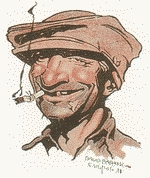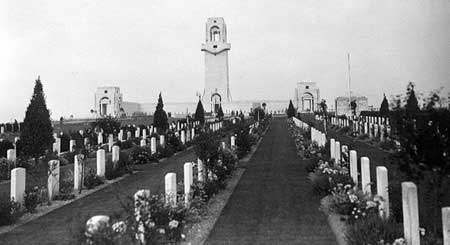The voluntary enlistment
|
On 30 July 1914, the Australian Prime Minister Joseph Cook declared Australia would stand by British Empire in a war situation and that they would be at United Kingdom’s side up to the last man and the last shilling. On the same time, recruitment office opened. The call to arms received an enthusiastic answer. Men lived their job or their farm and risk their life to reach recruitment centres, walking or riding in the inside deserts during hundreds of kilometres. Many candidates were refused because of health or physical problems. Volunteers were strictly selected. Consequently, these men had abilities better than average. So they believed us as superior to the other armies recruits. They have enlisted for various reasons. The search of adventure for the younger and the sense of duty for the older. The six-shilling daily pay also attracted them. The highest pay of all the Empire troops. Many just wanted to prove they were real men. Some feared for the Empire. All of them wanted to punish German considered as barbarians. Even if this war happened thousands of kilometres far. |
Decrease then fall of voluntary enlistment
 An example of propaganda poster |
Still April 1915, enlistment stood high then it stabilised. It increased when the Australian corps was involved in important tasks or when thing going wrong. The federal government try to improve by using films, posters or also orators on street corners. But at the end of 1915, the losses were not compensating by enlistment. The government took two sorts of measures. In September 1915, all man fit for military service were officially registered. Those that did not want to enlist had to provide explanations. Then Australia was divided into 36 recruitment areas. Each area had to supply a defined number of recruits. Those measures gave a boost to the voluntary enlistment. However, in 1916, it was not sufficient especially because of the significant losses this year. |
The rejection of conscription
Voluntary enlistment seemed to have reached its limits. New Prime Minister W.M. Hughes decided to introduce conscription as it had been done in UK. Australians rejected the project in 1916 referendum. Therefore, government had to make new propaganda efforts: recruitment increased but for a few time. At the end of 1917, conscription was again refused after another referendum. Campaigns for or against conscription divided the country and left a bad memory. As an example, conscription defenders accused the Irish origins catholic or trade unionists - often opposed to conscription - to abandon the soldiers on front line.
The human cost of the War for Australia
|
Despite controversy about conscription and the authorities fears, the half of men fit for service aged between 18 and 45 had enlisted. 80% were sent overseas. On about 330,000 volunteers, 59,000 were killed and 120,000 wounded. |



